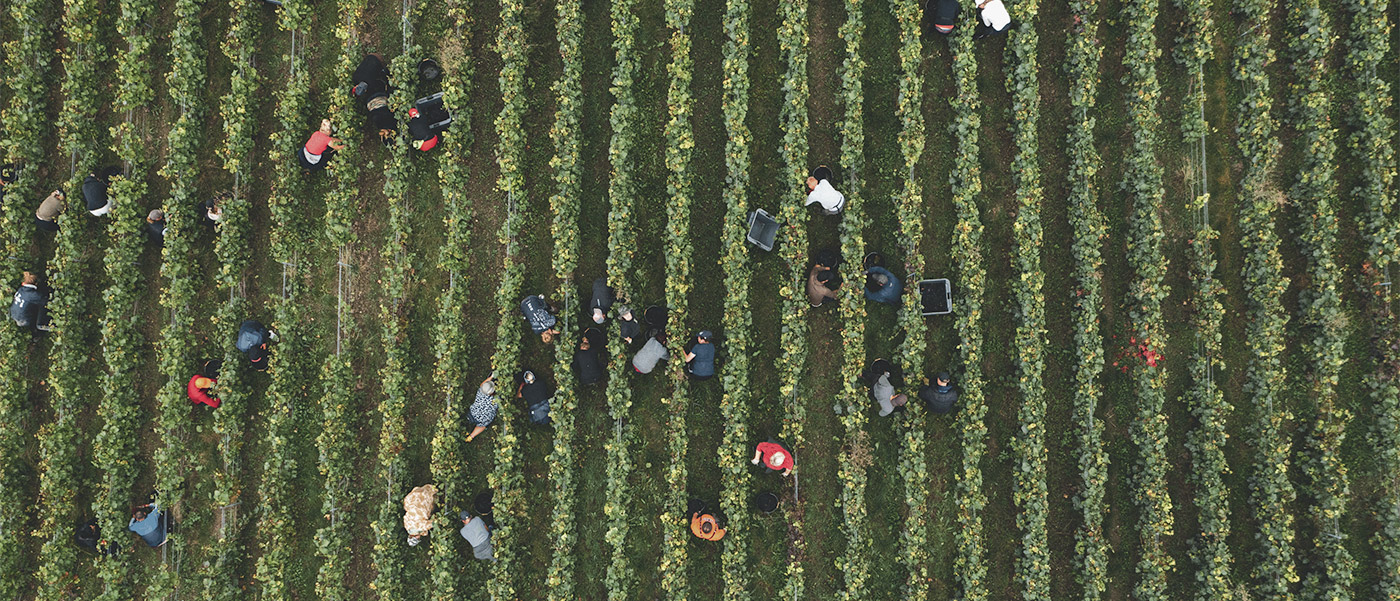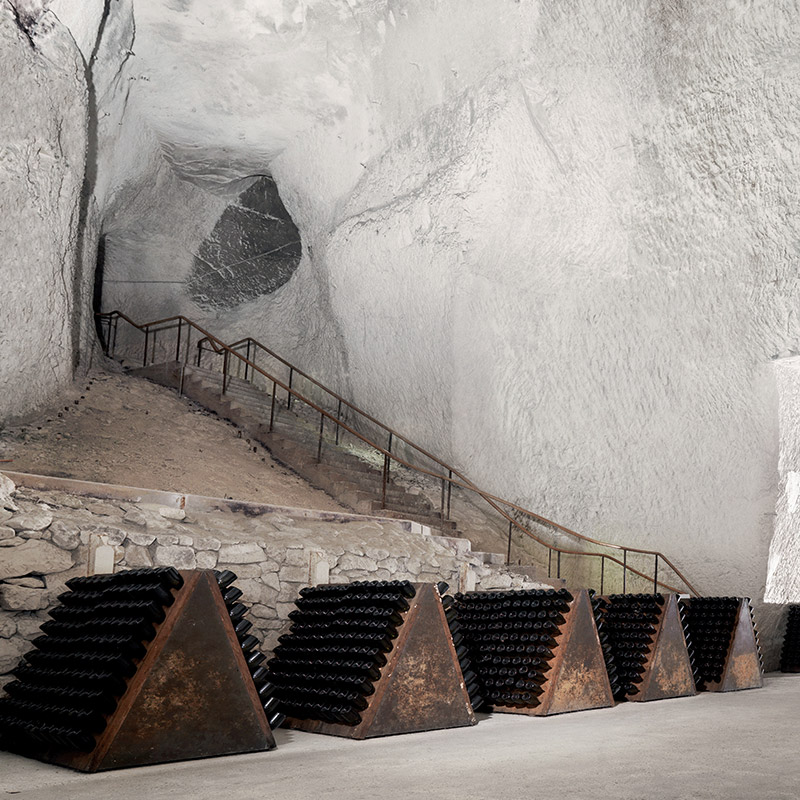That 2010 would be a year for a Dom Ruinart was not immediately apparent from the course of the year and the harvest. A promising spring and an average summer took a turn for the worse when torrential downpours began in August as the grapes began to ripen. Combined with high temperatures, botrytis infestation spread, especially in Pinot Noir and Pinot Meunier. Even some Chardonnay vineyards were not spared from the fungus. "In the autumn after the harvest, I would not have predicted that we would produce a Dom Ruinart in 2010," says Frédéric Panaïotis. "But the first tastings of the still wines showed great richness and potential, especially in the Chardonnay."
.jpg) Frédéric Panaïotis, Chef de Cave of Ruinart
Frédéric Panaïotis, Chef de Cave of RuinartWeather caprices have increased significantly since 2010, and this is now also noticeable in Champagne. Between 2003 and 2019, there were five harvests there alone that began as early as August, instead of the usual end of September. "We used to be able to make a Dom Ruinart maybe five times in ten years, now we can do it about eight times," says Louise Bryden, winemaker and project manager at Ruinart. She also expects an early harvest for 2022.
While in the beginning - as elsewhere - people benefited from warmer temperatures and more hours of sunshine, awareness of the dramatic consequences of periods of heat and drought for viticulture in the Champagne region and of their influence on the style of the wines is now heightened. "In the meantime we have riper grapes, but in the end it happens very quickly and we have to find an answer to that," is her experience. But in Champagne, change is hard to come by; a rigid system of regulations even gets in the way of issues like sustainability and biodiversity. Ruinart's commitment to these issues can therefore be considered pioneering in the region.
In the vineyards in Sillery, where some of the Chardonnay grapes for Dom Ruinart grow, the dedicated winemaker explains the activities of the house. "All vineyards belonging to Ruinart itself have been certified sustainable since 2014," she explains. "Viticulture durable en Champagne" is the name of the label and was initiated by the Comité Champagne. As a member of the first hour, Ruinart also motivates and supports its grape suppliers to produce their vineyards according to the principles of the label. "We pay more for the grapes from sustainably managed vineyards," says Louise Bryden. In her own vineyards, she has not used herbicides since 2020 and has the soil worked manually. However, the planting of vegetation is still in its infancy, with grass currently growing between the vines. Biodiversity through the varied sowing of flowering and useful plants is one of the topics that is very important to Louise Bryden. She is implementing this in the experimental vineyard in Taissy as part of the "Vitiforestry" project and wants to make it the standard for Ruinart. "We also want to have a natural fertilising effect through this. It's still an experiment, but it's very interesting and for me it's the future," says the young winemaker.
 |
Ruinart has also introduced other innovations: A dozen electric tractors work in the vineyard. The cooling liquid used for disgorging has been replaced by a mixture with corn sugar, saving up to 20 per cent energy and up to 40 per cent material. Furthermore, the house has developed an outer packaging made of 99 per cent paper. This alternative to the usual gift packaging saves a lot of CO2 in production and weighs only 40 grams instead of the previous 355 grams.

When it was decided in 2010 to produce a Dom Ruinart Blanc de Blancs, it quickly became clear that this would be the house's first vintage champagne to undergo both the second fermentation and bottle ageing under a cork stopper. The decision was preceded by years of trials by former cellar master Jean-François Barrot. According to Frédéric Panaïotis, the results contradicted all fears of a higher tendency to oxidation and advanced maturity.
"The champagnes showed more intensity, more complexity and greater potential". Sensory analysis alone, however, was not enough proof for those responsible. Analytical tests showed that under the cork stopper, the oxygen input was high, especially in the first three to four months - and was almost used up by the active yeasts during the second fermentation. Afterwards, the influence of the oxygen settled at a medium level and remained stable for years.
In comparison, significantly less oxygen penetrates the bottle from the beginning due to the closure with crown corks, but this curve continuously develops upwards. After six to seven years at the latest, the oxygen content under crown cork becomes greater than under natural cork. "So it makes sense to close champagnes that have been stored for longer than six or seven years with natural cork for bottle fermentation," says Frédéric Panaïotis. For champagnes with a shorter bottle ageing, crown corks offer more advantages.
In practice, however, this also means that the number of bottles that can be disgorged daily is limited to a maximum of 100. The clips that hold the cork in the bottle can only be opened with pliers. Careful removal takes considerably more time than disgorging with the crown cork. But time has always played a very important role in the production of prestige champagnes.
Photos: © Ruinart